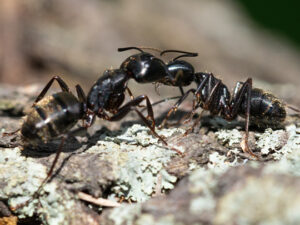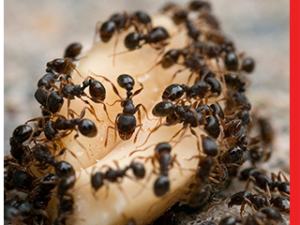
When we hear of swimming, we don’t often think of insects, and we especially don’t think of ants. However, there is certainly one species of ants that we hope can’t swim – the carpenter ant. Unfortunately, not only are they capable of swimming, they are actually very good at it.
As part of a study on how two ant species travel over water, researchers looked at carpenter ants and silky field ants. What they have found is that silky field ants are adept swimmers, but the carpenter ants are basically pro athletes. This is due to the association between faster swimming speeds and greater foreleg lengths. Even more interesting is that the carpenter ants are only 20% longer than the field ants, but they are twice as heavy, which suggests that they have greater muscle mass. This muscle mass of course helps the carpenters swim faster.
Most ant species do not do well in aquatic environments. You have the notorious fire ants, which can float, and the Camponotus schmitzi diving ant which will go underwater to steal insects trapped in pitcher plants, but outside of these two species, swimming (or floating) is not very common among ants. Carpenter and silky field ants are definitely not known for their aquatic abilities, but somehow they have evolved the ability to swim.
Carpenter ants are so good at swimming in fact, that they are able to double the maximum acceleration, maximum velocity, and swimming speed of the silky field ant. Researchers believed that this difference was due to the movement of the legs, before they started to run experiments. However, when the experiments started, they found that both species use the same movements – the front legs were used for propulsion, while the back legs were used for steering and the mid legs were used for both purposes.
So why were the carpenter ants so much better at swimming than silky field ants? As it turns out, carpenter ants have longer forelegs than their cousins. This evolutionary adaptation starts to make sense when you look at how these two species operate. Carpenter ants tend to use vegetation as bridges over water, while the field ants prefer to stay on the ground. If a carpenter ant falls far away from the shore, it will have to swim much more in order to survive, while the field ant will only barely venture offshore. After all, carpenter ants create their colonies inside the wood and branches of various trees so falling into bodies of water is a much more regular occurrence.











